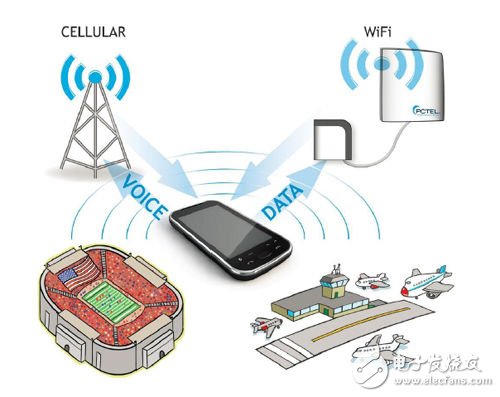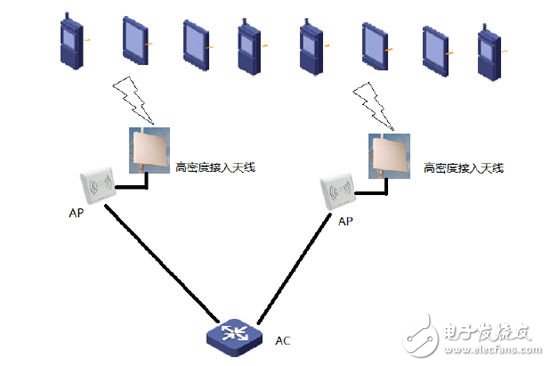Wireless high-density access design
Currently, mobile wireless technology is transitioning to 4G LTE, and LTE networks in many countries and regions are already commercially available. According to a study by iSuppli, global smart terminal shipments are expected to increase from 246.9 M pcs in 2010 to 506 M pcs in 2014. Major operators have also deployed 3G/4G base station networks in key areas to meet Most of the user's voice and data business needs. However, in some cases, relying solely on base station network coverage, there are still problems. For example, when a stadium is holding a competition, users need to share the wonderful video on the Internet and need to talk to others. In general, the local 3G/4G base station can better support this voice and data service. However, during the game, a large number of users usually access the local base station network, which requires the local specific base station network to process a large number of voice and data services in a certain period of time, causing the air interface blockage of the base station. The direct result is that the quality of the user's call is degraded, often dropped, the browsing speed of the Internet is greatly reduced, or there is no response for a long time. In response to this problem, the current industry solution is to combine 802.11n wireless LAN technology and 3G/4G network technology to divert users' data services and voice services. That is, when the intelligent terminal user enters the area covered by the WIFI MIMO network, the data service is turned to the WIFI network, and the cellular network focuses on the voice service, so that the licensed frequency band can have a better call quality, which is the Cellular Offloading solution, as shown in FIG. Shown. Figure 1: Schematic diagram of the Cellular Offloading scheme. Cellular Offloading technology requires the same venue to have both 3G/4G network signal coverage and WIFI network signal coverage. Among them, 3G/4G base stations are used for voice communication and WIFI networks are used for data services. A typical WIFI network structure includes: a user client, an antenna, an access point Access Point, a wireless controller AC, and a backbone network. The typical architecture is shown in Figure 2: Figure 2: A typical WIFI network structure. The current WIFI mainstream technology is the 802.11 a/b/g/n protocol, and in practical applications, engineers are most concerned about how to achieve the best coverage and throughput while saving investment. The following article describes how to use the existing technology and products to achieve a good coverage and air interface throughput in high-density applications. Our Fiber Optic Tools including Fiber Optic Tool Kits, Fiber Termination Tools: Fiber Splicing Tools, Fiber Network Tools, Crimp Tools, Fiber Connector Tool, Corning Fiber Tools, Fiber Stripping Tools, Cleaving Tools, Fiber Scribe Tools, Fiber Optic Mid-Access Tools, cable slitter, cable cutters, Kevlar cutters, optical connector removal tools, cable pulling tools, fiber optic work table, distance measuring wheels, heat gun and Fiber Optic Cable dispenser. Fiber Optic Tools Fiber Optic Tools, Fiber Cutter And Stripper, Fiber Cleaner, Fiber Susion Splicer, Fiber Optic Stripper, Fiber Splice Closure, Fiber optic Splice Boxes NINGBO YULIANG TELECOM MUNICATIONS EQUIPMENT CO.,LTD. , https://www.yltelecom.com

